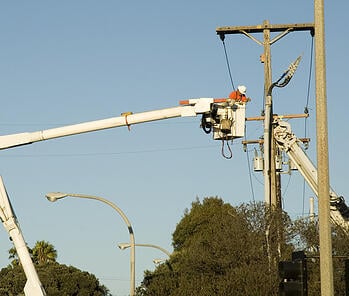How NESC Violations Impact Joint Use Pole Owners
 The National Electrical Safety Code (NESC) “sets the ground rules for the practical safeguarding of persons during the installation, operation or maintenance of electric supply and communication lines and associated equipment” across the United States. It is designed to ensure the safety of both workers and the general public. Currently published every five years by the Institute of Electrical and Electronics Engineers (IEEE), it is adopted as law by the states — most states in the US have approved the NESC as law with the exception of California, who writes their own utility codes.
The National Electrical Safety Code (NESC) “sets the ground rules for the practical safeguarding of persons during the installation, operation or maintenance of electric supply and communication lines and associated equipment” across the United States. It is designed to ensure the safety of both workers and the general public. Currently published every five years by the Institute of Electrical and Electronics Engineers (IEEE), it is adopted as law by the states — most states in the US have approved the NESC as law with the exception of California, who writes their own utility codes.
Its guidelines encompass everything from minimum clearances around and beneath distribution and transmission lines and line height requirements to maintenance of facilities no longer in service and provisions for emergency installations. (If you want an idea of how extensive the rules are the current 2012 edition is approximately 345 pages long.) It is the responsibility of electrical companies and pole owners to abide by the laws and meet the requirements set out in the guidebook. Because if they don’t, they’ll end up with hefty fines, in addition to the potential liability and expensive legal disputes in association with any accidents or harm that occurred from not complying with the code.
Consider the following situation in which three utility poles located on Malibu Canyon Road in southern California broke and fell during Santa Ana winds in 2007. The downed electrical wires then caused a fire that burned 3,836 acres, destroyed 14 structures and 36 vehicles, and damages another 19 structures. The poles, which were co-owned by Southern California Edison (SCE) and other joint use communication companies, were determined by state regulators to be overloaded, a violation of state regulations. SCE ended up paying $37 million to settle the pole overloading allegations.
While this particular incident happened in the state of California, which as we mentioned has its own utility codes, the impact of the violations are the same as if they would have occurred in another state abiding by NESC rules: preventable damage and an enormous price tag.
In order to ensure compliance with NESC requirements, joint use pole owners should conduct regular utility pole inspections to identify NESC violations and maintain a database with accurate data collected from these inspections in order to properly attend to any violations. Having a system for open communication with joint use partners can also aid in avoiding violations and the consequences that come with them. According to regulatory filings on SCE’s poles, each company that has use of the pole is required to calculate a pole’s load before attaching any new equipment to it. Failure by joint use partners to share inspection data could have contributed to differences in load calculations. And it goes without saying that all necessary personnel should know, or at least have access to, NESC regulations.
Remember that the National Electric Safety Code (NESC) exists to protect workers and the public. The goal for any utility pole owner should be to have safe structures, and safe structures mean compliant structures.

Comments